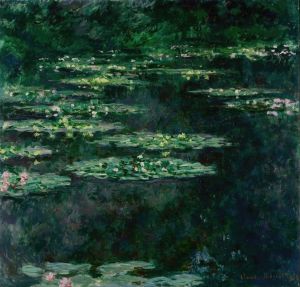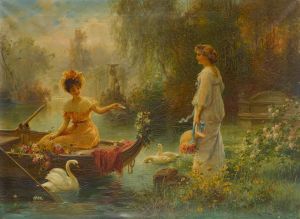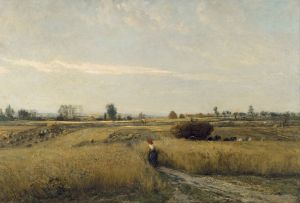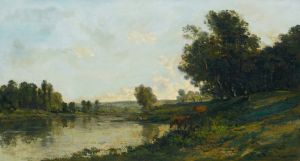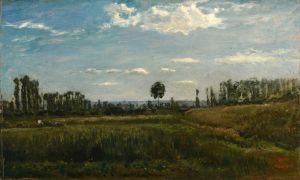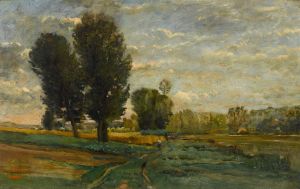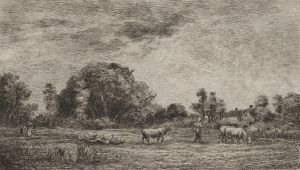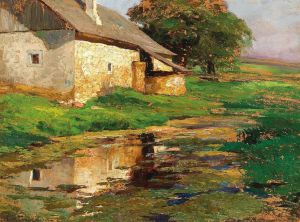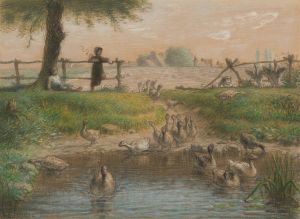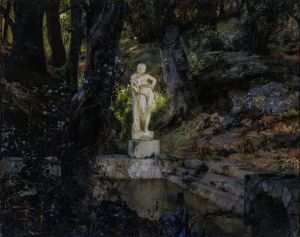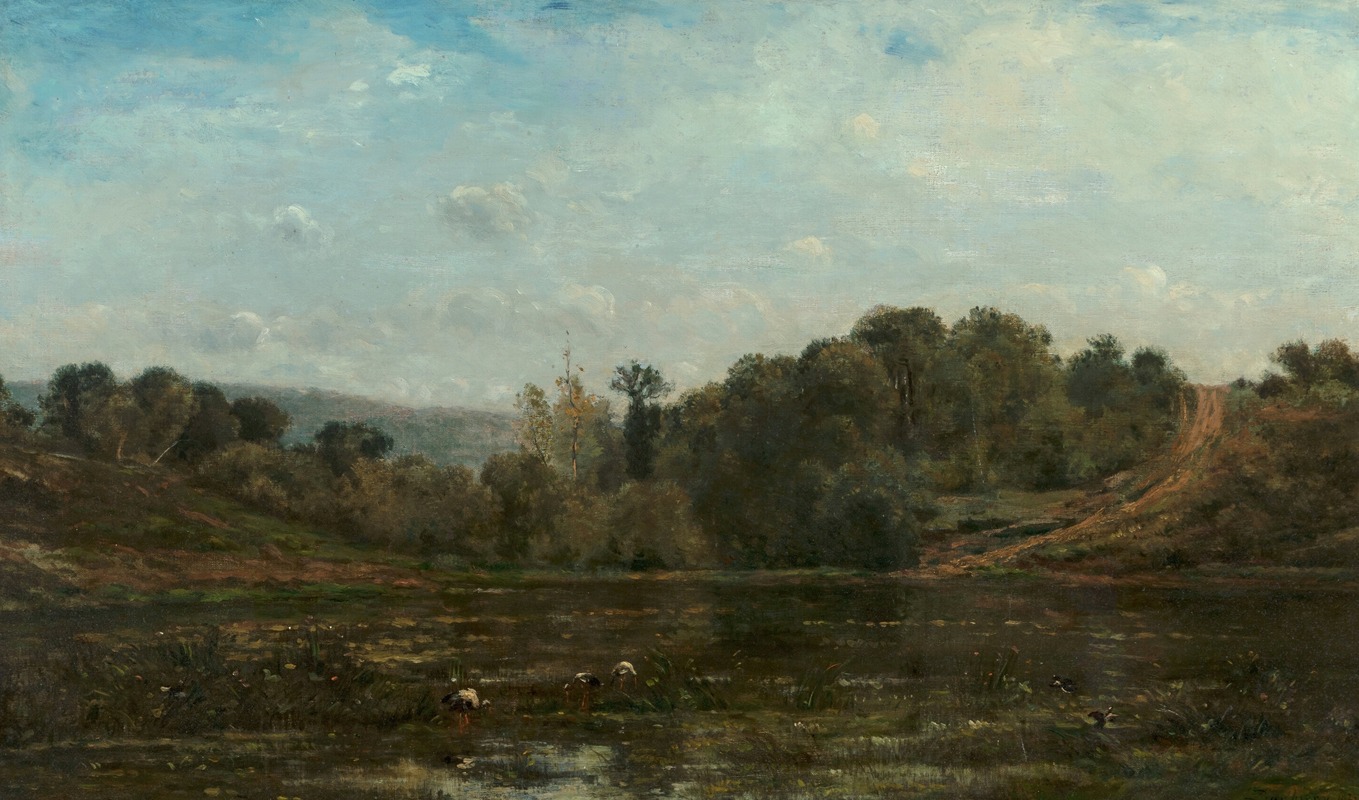
Cranes watering at the edge of a pond
A hand-painted replica of Charles François Daubigny’s masterpiece Cranes watering at the edge of a pond, meticulously crafted by professional artists to capture the true essence of the original. Each piece is created with museum-quality canvas and rare mineral pigments, carefully painted by experienced artists with delicate brushstrokes and rich, layered colors to perfectly recreate the texture of the original artwork. Unlike machine-printed reproductions, this hand-painted version brings the painting to life, infused with the artist’s emotions and skill in every stroke. Whether for personal collection or home decoration, it instantly elevates the artistic atmosphere of any space.
Charles François Daubigny was a prominent French painter of the 19th century, known for his significant contributions to the Barbizon School and as a precursor to the Impressionist movement. His painting "Cranes Watering at the Edge of a Pond" exemplifies his mastery in capturing the serene beauty of natural landscapes, a hallmark of his artistic style.
Daubigny was born in Paris in 1817 and was initially trained by his father, Edmé-François Daubigny, who was also a painter. He further honed his skills under the tutelage of artists like Paul Delaroche. Daubigny’s early works were influenced by the classical landscape tradition, but he gradually developed a more naturalistic approach, which became evident in his later works.
"Cranes Watering at the Edge of a Pond" reflects Daubigny’s fascination with the natural world and his ability to depict it with a sense of tranquility and realism. The painting likely dates from the latter part of his career when he had fully embraced plein air painting—a technique that involves painting outdoors to capture the changing effects of light and atmosphere. This approach was revolutionary at the time and laid the groundwork for the Impressionists, who admired Daubigny’s work.
In this painting, Daubigny captures a peaceful scene where cranes are depicted at the water's edge, engaging in their natural behavior. The composition is balanced, with the cranes positioned in a way that draws the viewer's eye across the canvas. The use of light and shadow is subtle yet effective, highlighting the delicate features of the birds and the gentle ripples of the pond. Daubigny’s brushwork is loose and fluid, a technique that allows him to convey the movement of water and the soft texture of the surrounding foliage.
The color palette in "Cranes Watering at the Edge of a Pond" is typical of Daubigny’s work, featuring earthy tones and muted greens that evoke a sense of calm and harmony with nature. This restrained use of color enhances the overall mood of the painting, inviting viewers to pause and appreciate the quiet beauty of the scene.
Daubigny’s influence on the art world was profound. His innovative techniques and dedication to capturing the essence of the natural landscape inspired a generation of artists, including Claude Monet and Camille Pissarro. These artists would go on to form the core of the Impressionist movement, which sought to depict the world with a fresh perspective, emphasizing light and color over detailed realism.
"Cranes Watering at the Edge of a Pond" is a testament to Daubigny’s skill as a landscape painter and his ability to convey the serene beauty of nature. His work remains celebrated for its contribution to the evolution of modern art, bridging the gap between traditional landscape painting and the innovative approaches of the Impressionists. Through his paintings, Daubigny invites viewers to experience the tranquility and splendor of the natural world, a legacy that continues to resonate with audiences today.





